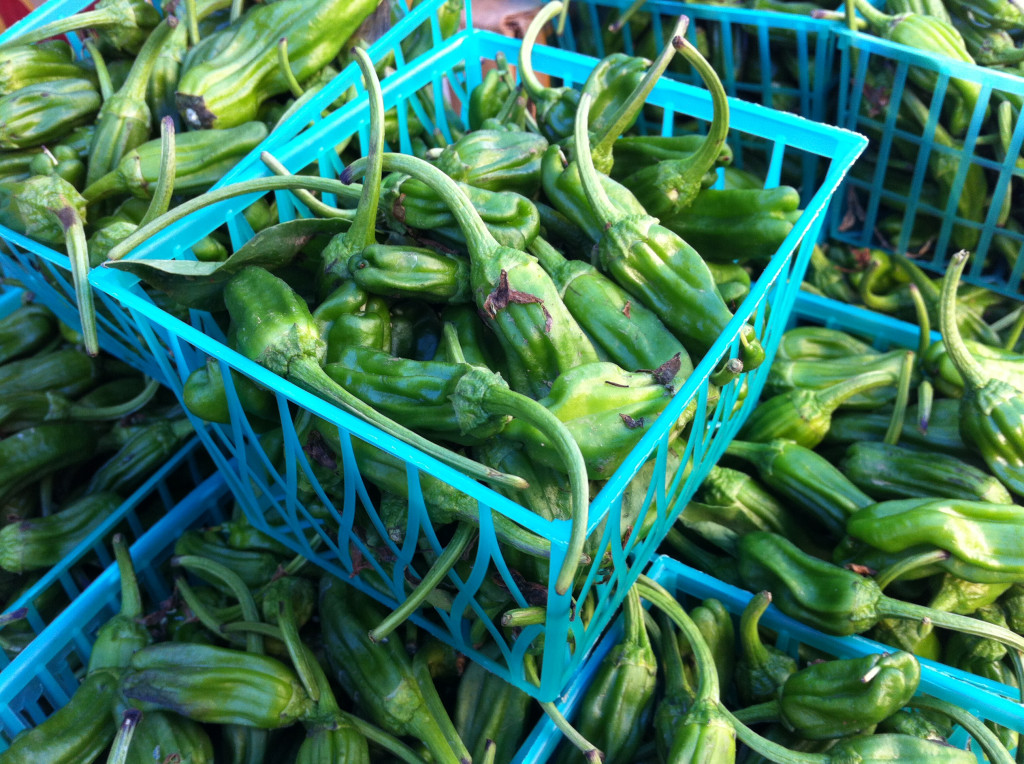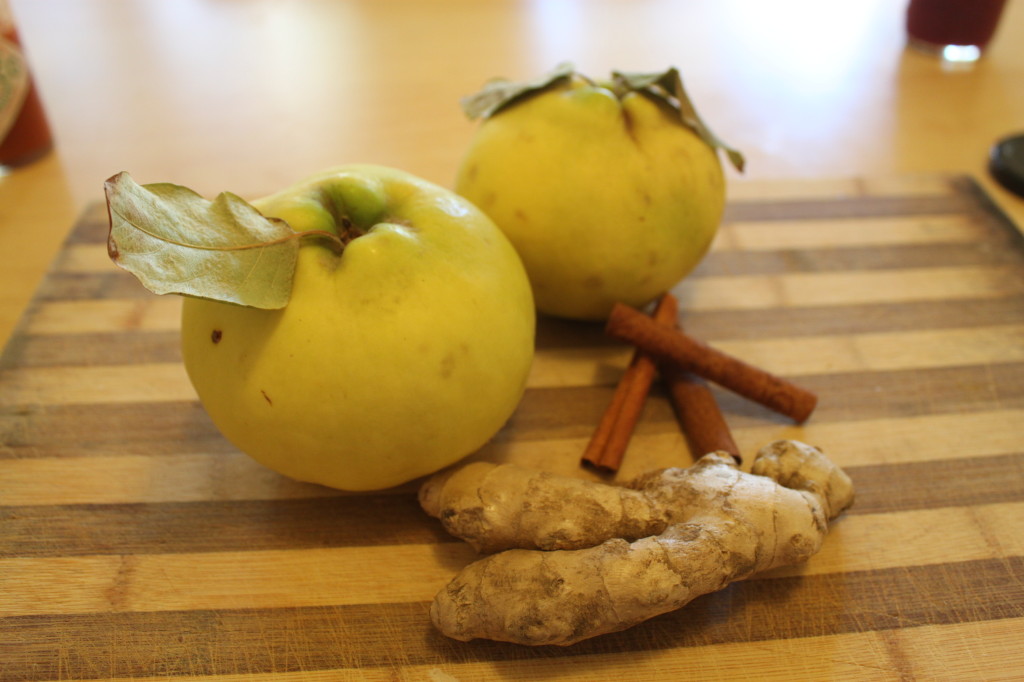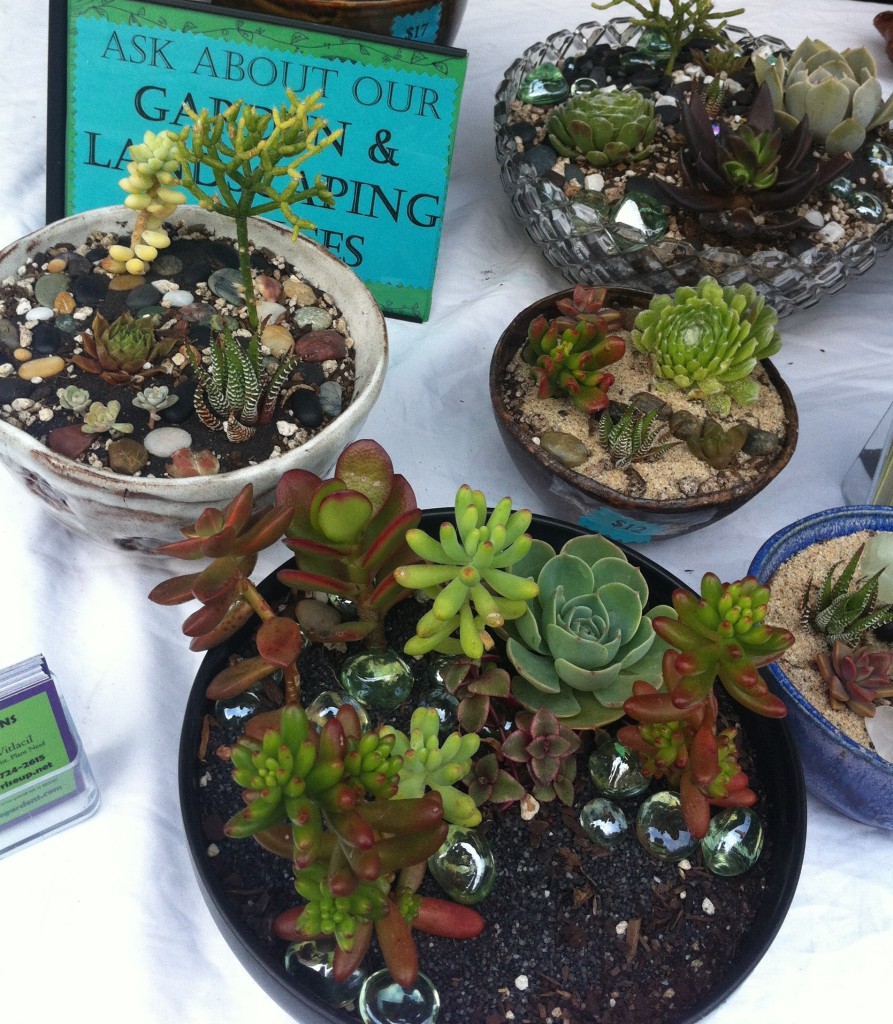When I asked Ash of Happy Boy Farm to talk to me about the difference between Padrón and Shishito Peppers, she exclaimed, “Well, for starters, they come from two totally different parts of the world!”
To the naked (and uninformed) eye, baskets of these two small green peppers often found at MCM this time of year might appear indistinguishable. But guess what–they each have quite a story to tell, with properties that make them unique. I decided to delve into the history behind these two fraternal twin peppers a little more to find out what makes makes them special.

Padrón Peppers
The most famous produce of the Spanish city Padrón are its peppers. Franciscan monks first brought pepper seeds to the area from Mexico in the 16th century, which then were adapted to the soil and climate of the area.
Most of the peppers taste sweet and mild–like tiny bell peppers–though some are particularly hot and spicy, which can give some special character to a dish prepared with these little guys. The popular Spanish saying,“Os pementos de Padrón, uns pican e outros non” meaning “Padrón peppers, some are hot and some are not” captures this sentiment perfectly. Although it’s not always the case, some have found that the peppers grown later in the season (towards August and September) tend to contain more capsaicin–and thus are spicier–than the grown in June and July. A couple sources I found said that about one in every 20 peppers will be hot, and the rest will be mild. However, sometimes you’ll get a basket with a slightly higher ratio. It really is a game of spicy roulette when you eat these peppers!
Shishitos on the other hand, come from Japan, halfway around the world, as Ash told me.

Shishito Peppers
The Shishito pepper is small and finger-sized, slender, and thin-walled. The name refers to the fact that the tip of the chili pepper looks like the head of a lion (“shisho”) and in Japanese it is often abbreviated as Shishitō.
Though apparently some varieties of Shishitos do form capsaicin and become spicy, Ash assured me that I wouldn’t find a spicy pepper in my basket–and I didn’t. The peppers generally become spicy in hot, dry conditions, and we won’t often get such weather here. According to Ash, Shishitos are also more “buttery” than their Padrón counterparts.
The easiest way to tell them apart is the fact that the Shishitos are usually more slender and wrinkly, while Padróns tend to be fatter, and have an appearance more similar to Jalapeños.
Lucky for us, both varieties of peppers cook up easily and with much the same simple preparation–toss them in a glass baking dish with some olive oil, coarse salt, and black pepper, and bake for about 20-25 minutes at 350 ° F until slightly browned in parts. It doesn’t get much easier than that! I like to sprinkle them with some goat cheese or feta if I have it on hand.
Enjoy the rest of our San Francisco summer, and happy pepper picking!









